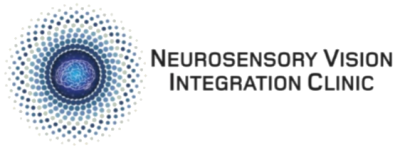What We Treat
STRAMBISMUS (LAZY EYE) & AMBLYOPIA
Have you been told you have a “lazy eye”? Did you do patching therapy when you were younger? Does one of your eyes wander? Large prescription differences between eyes or misalignment between eyes can lead to amblyopia. Amblyopia essentially means one eye has reduced vision compared to the other due to development in the brain. NVIC’s CogniViiSION™ therapy techniques enhance these brain functions in the under-developed eye, leading to amazing results. Correcting both the misalignment and the blurry vision, therapy can restore vision and cosmetic appearance. Compared to traditional therapy or traditional patching, CogniViiSION™ targets the brain directly, allowing for quicker, stronger, and lasting therapy effects. In other words, there is minimal regression, less need for maintenance therapy, and results can be seen at all ages.
BRAIN INJURIES
Brain injuries such as concussions, traumatic brain injuries, strokes, etc. often manifest with significant visual symptoms. Eyestrain, double vision, headaches, and trouble focusing are a few problems these patients face leading to trouble reading and poor visual processing. Therapy can help restore normal a more normal visual system by targeting the brain directly during therapy. Our CogniViiSION™ therapy protocol targets 100% of the visual system as well as building lasting sensory integration.
VISUAL, SENSORY, & AUDITORY PROCESSING DELAYS
Processing delays can manifest in many different ways, but visual and auditory processing delays are particularly concerning because they can directly influence a child’s learning ability. Slow processing of images, sounds, or the integration of these senses with the gross motor system can lead to many developmental problems. Many children with processing delays may also have been diagnosed with dyslexia, ADD, or ADH. Therapy protocol at NVIC helps strengthen the visual, auditory, and motor systems in the brain, especially by integrating all the senses.
Learning Related Vision Problems

Learning problems often coincide with vision problems.
Learning skills consist of the ability to learn with attention using various modes of learning, such as visual learners vs. tactile learners vs. auditory learners or combination learners. Processing consists of cognition, memory, and language. Perception involves your current mental state, past experiences, motivation, attention, imagination, and interpretation of a stimulus. Visual perception can be divided into 3 areas: visual spatial, visual analysis, and visual motor.
Vision is both seeing and processing what is seen. Learning related problems often coincide with some sort of deficit in vision because so much of what we do all day everyday involves our vision.
Neurosensory vision integration therapy is powerful because it accesses a large part of the brain. We aim to improve neuronal connections and the speed and timing of those connections using the visual system. The visual system, more than any other sense, takes up more than 50% of the brain’s capacity at all times.
DYSLEXIA
Dyslexia is a broad term to describe a learning disability. Children with dyslexia often take longer to process letters and words. Dyslexia leads to slow reading, delayed processing, and learning deficits. In addition to working with reading specialists in schools, vision therapy can help restore normal cognitive function in children with dyslexia. Targeting the visual cortex, therapy increases the brains ability to process visual information quicker.
ACCOMMODATIVE DISORDERS (FOCUSING)
Do you have trouble focusing on an object near you? Do have trouble switching focus between distance and near? Does reading or other near work cause headaches? Have you been prescribed a bifocal even though you are young? Although blur at near is normal for those over 40 years old, focusing problems at near are prevalent even among younger patients. Through therapy techniques, the accommodation system in the eye can be strengthened to return normal accommodative function.
CONVERGENCE INSUFFICIENCY

Patient doing Brock String to correct Convergence Insufficiency.
Do you have trouble focusing on an object near you? Do you see double or have words move on the page when reading? Convergence insufficiency is defined as the inability of the eyes to converge or focus together on a near object. Children may complain of headaches, double vision, or lack of interest in reading. This can cause frustration for children and possible learning delays. Here at NVIC, we specialize in diagnosing and treating convergence insufficiency with a combination of glasses and vision therapy.
SPORTS VISION
The visual system is a dominant force in sports performance. NVIC utilizes therapy techniques to strengthen the visual system. Increasing an athlete’s reaction time and synchronizing audio and gross motor (sensory integration) with visual cues are a few ways sports performance can be enhanced through therapy.






